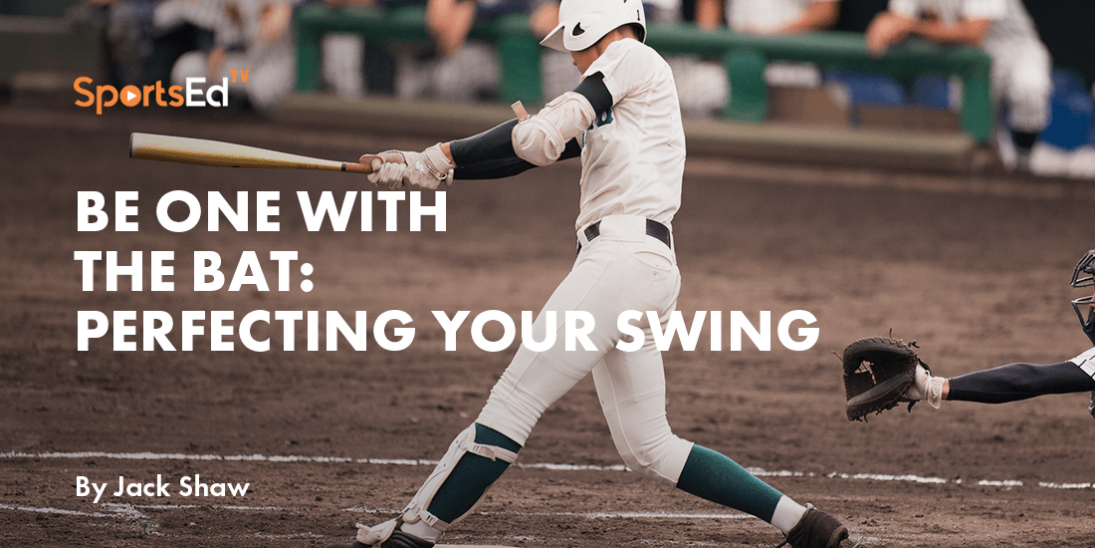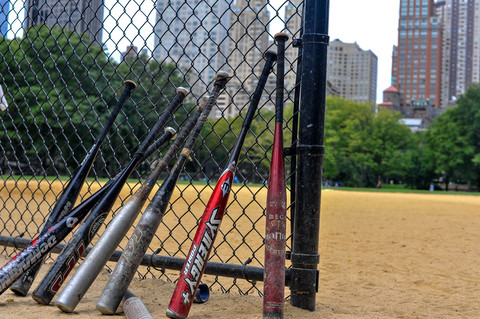Baseball
Welcome and thanks for visiting...

Be One with the Bat: Perfecting Your Swing

To become a great hitter in baseball or softball, you must do two simple things — find the right bat and adjust your swing accordingly. All hitters have specific bat preferences, but you must practice your swing relentlessly to make the equipment work to your advantage. Here’s how you can become one with the bat, perfect your swing and take your game to the next level.
Different Types of Bats
Bats are available in wood, aluminum, and composite materials consisting of graphite, glass fiber, and carbon fiber polymer. Amateur leagues prefer to use aluminum or composite bats, while professional leagues traditionally use wooden bats. Here’s how each material can affect your swinging speed, power, and stamina.

Wood
Wooden bats are the cheapest and easiest to make, but they’re also the most difficult to use. They also have a smaller sweet spot on the barrel, which makes hitting more of a challenge. Major League Baseball only uses wooden bats to lower the ball velocity and keep players safe.
The most common types of wood in wooden bats are maple, ash, birch and bamboo. Maple is the best option overall, providing excellent strength and durability. Ash and birch aren’t quite as strong, but they have a forgiving flex level that helps the bat absorb contact from the baseball. Players often use bamboo in batting practice because it rarely breaks.
Aluminum
Aluminum bats are the go-to options from Little League to NCAA baseball and softball for several reasons. They’re much lighter, more durable, and have a bigger sweet spot on the barrel than wood, making hitting much easier. Players can hit the ball harder and farther with aluminum bats.
Composite
Composite bats are almost like bats with built-in cheat codes. They weigh about the same as aluminum bats but have more elastic properties. Composite bats eliminate vibrations and create a strong trampoline effect when the hitter makes contact, which leads to a higher velocity. Manufacturers can also fine-tune the trampoline effect and barrel flex as needed.
This fine-tuning process is a form of quality check known as statistical process control, which identifies trends and patterns that allow manufacturers to remove defects. For this reason, composite bats never break and always outperform their wooden and aluminum counterparts. They’re so overpowered that the NCAA and MLB don’t allow them.
Finding the Right Bat Size
The bat’s material is the most important factor, but you must also consider the length, weight, and “drop weight.” Drop weight is a simple measurement determined by subtracting the bat's weight from its length. For example, if a bat is 34 inches long and weighs 31 ounces, it has a drop weight of three.
Higher drop weights indicate a lighter bat, while lower drop weights indicate a heavier bat. Drop weight is essential because it helps players identify the most ideal length-to-weight ratio for the bats they use during games. Lighter bats are almost always better than heavier bats, but all players have preferences based on their swing mechanics and body proportions.
You can use a bat sizing tool or chart to determine your ideal size. Most little-league players use between 27 and 30 inches or between 19 and 26 ounces. High school, college, and professional players use 33 inches or longer bats and 30 ounces or heavier. These measurements generally apply to baseball and softball.
However, these resources shouldn’t be the ultimate deciding factor. Instead, you should experiment with different bat materials and sizes. With the help of an instructor, you can use batting cage drills and expose each bat to various pitches. You need to see how each one performs under unique circumstances that might arise in a real game.
Here are some vital qualities you should consider when evaluating different bats:
- Knob: How does the knob feel on your bottom hand? Does your hand comfortably rest on the knob or does it get in the way?
- Grip: Do you maintain a strong grip on the bat throughout your swing? Does the grip cause any irritation or painful vibrations when you make contact?
- Swing speed: How fast can you swing the bat over the plate? How does it perform against fastballs compared to off-speed pitches?
- Plate coverage: How much plate area does the barrel of the bat cover? Ideally, the barrel should cover the entire plate to maximize your hitting zone.
If your experiments are inconclusive, you could also pay for a bat fitting service. They use electromagnetic motion-capture technology to analyze your swing mechanics and make the best bat recommendations. Numerous factors — such as launch angle, exit velocity, opposite field hitting and batting average with different pitch types — come into play.
Tips for Improving Your Swing Mechanics
Although finding the perfect bat can significantly improve your hitting performance, you should devote most of your energy to your swing mechanics. Developing a sound batting technique involves six key phases:
- Grip: Line up the knuckles of your bottom hand with the knuckles of your top hand.
- Stance: Evenly distribute your weight between both feet, lower your front shoulder, and keep your eyes, nose, and chin down.
- Load: Lift your front leg and load your weight onto your back hip as the pitcher is about to throw the ball. Keep your head as still as possible.
- Stride: Step forward with your front leg and firmly put your heel into the ground. Allow your back leg to bend as necessary and release the weight from your back hip forward through a hinging motion. Your back foot should be weightless when you make contact.
- Swing Path: Drop your hands and bring the barrel of the bat across the plate so it covers as much plate area as possible. Your swing path will vary based on the pitch’s location. High pitches have a straighter swing path, while lower pitches have a more elevated one.
- Finish: Let your hips open up so your back faces home plate. Follow through with your swing and let your upper hand lose grip if that feels more comfortable.
Practicing with batting aids such as hitting tees, weighted bats, and certified hitting coaches will help you refine each step. You must also prioritize your strength and conditioning to achieve maximum power. Developing your physical tools will simultaneously improve your hitting ability and help you find the most optimal bat for your style of play.
Find Your Perfect Bat, Develop a Perfect Swing
Baseball and softball players are notorious for being superstitious about their equipment, especially their bats. Finding the perfect one will give you a huge mental boost and allow you to develop an excellent swing. Once you get a bat that aligns with your body proportions, you can start making great strides with your swing mechanics and unlock your full potential.








